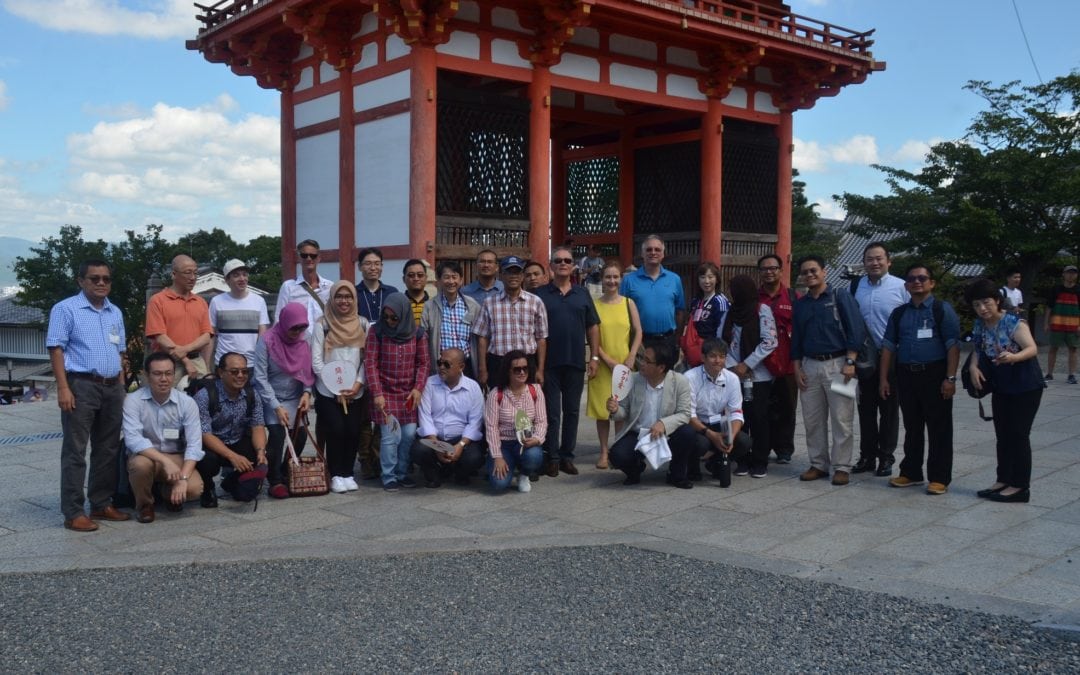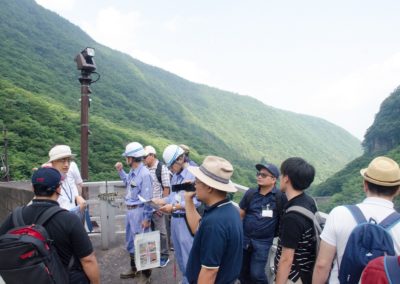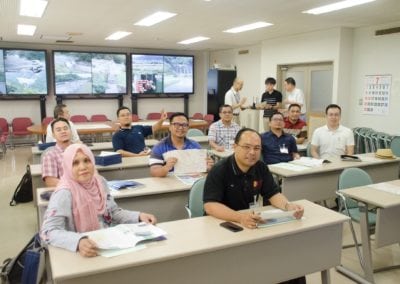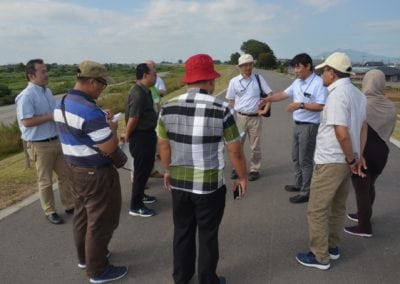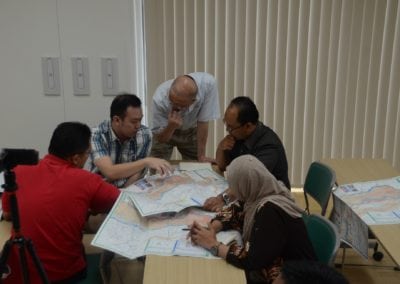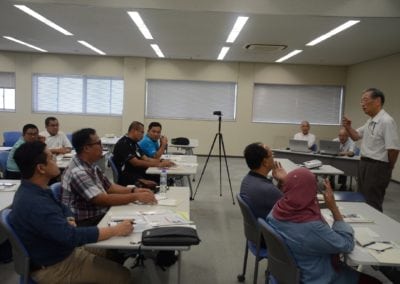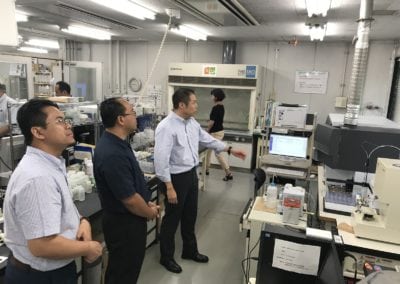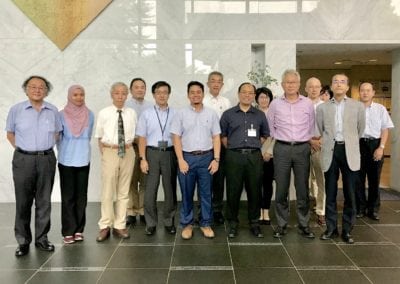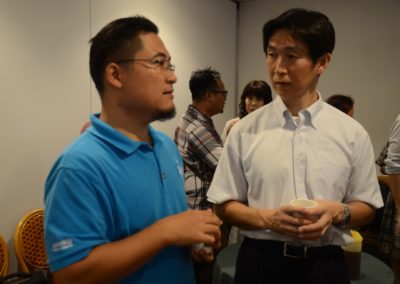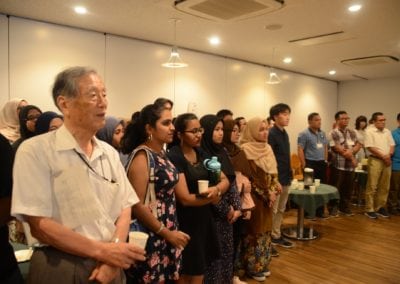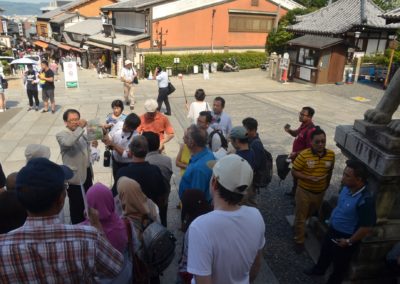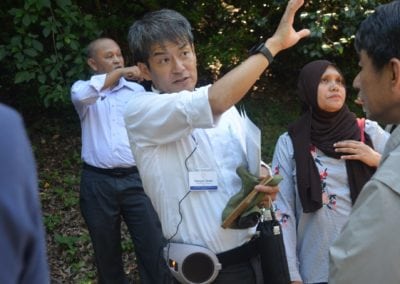MDRM students joined the Japan Attachment 2018 program again this year from 22 July to 2 August to experience how disaster risk management is actually conducted in Japan after a year of in-class lectures by Japanese professors and experts during the 2017/2018 academic year.
Soon after arriving at Tokyo Narita Airport, students and faculty members were taken to Tsukuba City where they had visited some of the renowned universities and research institutes, including Tsukuba University, National Research Institute for Earth Science and Disaster Resilience (NIED) and International Center for Water Hazards and Risk Management (ICHARM) of the Public Works Research Institute (PWI).
1st week – Kanto (East Japan) Program:
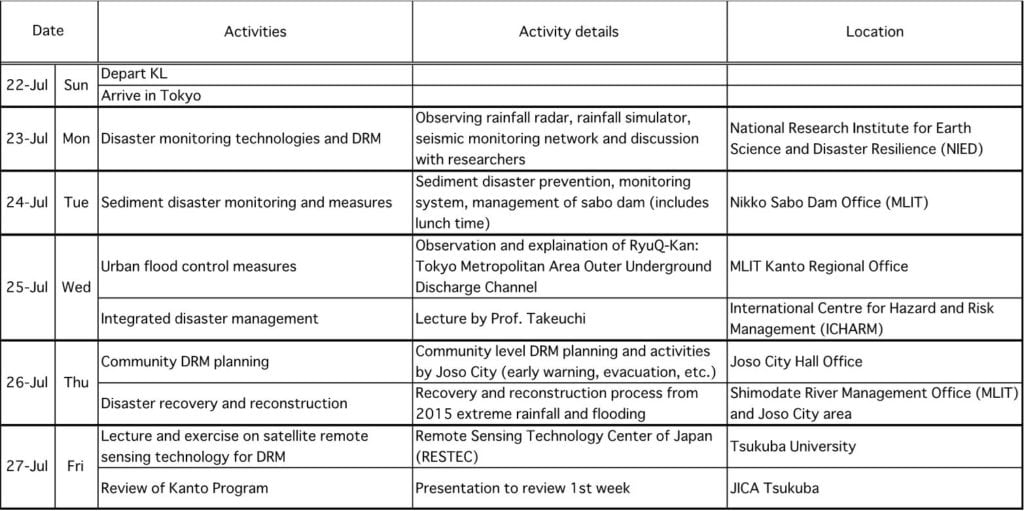
At NIED, the students were able to observe their earthquake monitoring system and experience the world largest rainfall simulator system, demonstrated by Dr. Naoki Sakai, MDRM lecturer. NIED can be considered as an example of how research institutes can partner with government of private companies to work together in solving DRM issues.

The participants then visited the Nikko Sabo Dam Office where officers of Kanto Regional Office of the Ministry of Land, Infrastructure, Transport and Tourism (MLIT) closely monitored the Inari River that is protected by different types of sabo dams. The hardware measures have proven to be effective in protecting Nikko City, a popular tourist destination, and several world heritage sites located downstream from debris-related disasters.
On the following day, Ryu-Q-Kan, the massive underground discharge channel that protects the Kinu and Tone river basins including many low-lying areas in Tokyo was visited. As other visitors, the participants were awed by this underground parthenon that operates on an average 7 times per year during the raining season in Japan.

While the Kinu River Basin suffered a historical flooding event in 2015, the visit to Joso City and Shimodate River Management Office demonstrated good practice on how central and local governments could collaborate in disaster response and recovery. Each has also taken unique approaches in working with the local residents in disaster prevention awareness and activities.
The participants enjoyed their reunion with Prof. Takeuchi and Prof. Egashira, both MDRM lecturers, at ICHARM where they received lectures about the latest situation in Central Japan where a series of flooding took lives of over 200 people. They also visited the hydraulics experimental laboratory after the lectures.
With Tsukuba City being the home of Japan Aerospace Exploration Agency (JAXA), the session with Remote Sensing Technology Center of Japan (RESTEC) provided a crash course for utilizing satellite remote sensing technology for disaster prevention planning.

In addition, some of the participants were able to visit Nippon Koei Research Institute, one of the largest civil engineering consulting companies in Japan, and observe its experiment facilities. Discussions were held on possible student internships and join research.
In the evening, a dinner reception was organized by Tsukuba University in which participants were able to reunite with other MDRM lecturers, partners and MJIIT students who are currently studying there.
In the second week of the Japan Attachment, the participants moved to Kansai area in Kobe and Kyoto.
2nd week – Kansai (West Japan) Program:

The visit to Disaster Management Center of Hyogo Prefectural Office gave another glimpse of local government’s effort in sustainable reconstruction and recovery after the 1995 Great Hanshin Awaji Earthquake that created the “self-help” and “mutual-help” concepts.

Students from medical background especially appreciated the talk by Dr. Shinichi Nakayama, Director of Hyogo Emergency Medical Center (HEMC), the regional DMAT hub that was established after the 1995 Earthquake. The Emergency Medical Information System (EMIS), in particular, was deemed important and applicable in hospitals in Malaysia.

Kyoto for owning 17 world heritage sites is the most suitable place to learn about cultural heritage protection and disaster prevention. Jointly organized by UNESCO, Professor Takeyuki Okubo of the Institute of Disaster Mitigation for Urban Cultural Heritage (R-DMUCH), Ritsumeikan University guided the participants through Kiyomizu Temple and Higashiyama Ward on how community-based disaster management has been functioning in the area.
Lastly, MJIIT-Kyoto University Joint Seminar was again organized this year with support from Professor Takara, Dean of the Graduate School of Advanced Integrated Studies in Human Survivability (GSAIS), Kyoto University and participated by Professor Michinori Hatayama and Professor Tetsuya Sumi, MDRM professors, and Professor Takahiro Sayama of Disaster Prevention Research Institute (DPRI).
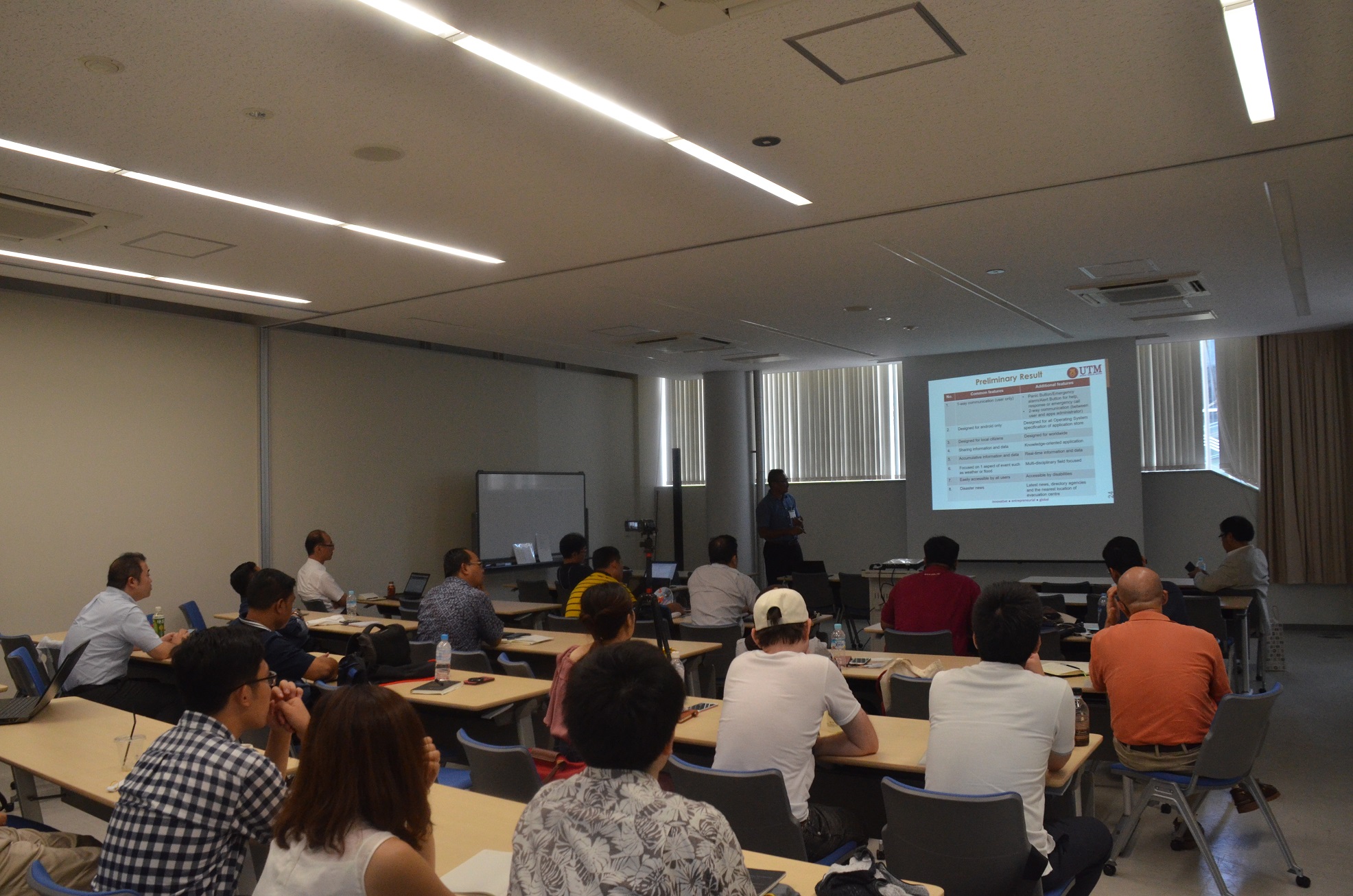
Full time MDRM students are eligible to join the fieldwork programmed in the Japan Attachment that is funded and implemented every year as JICA Knowledge Co-Creation Program (KCCP), tailor made based on students’ background and interests.

